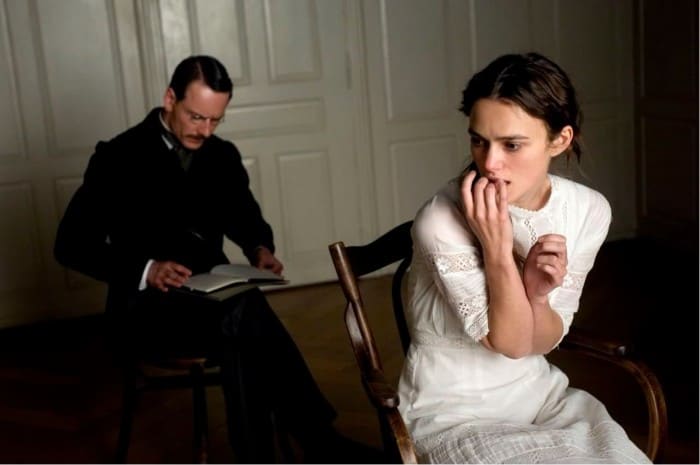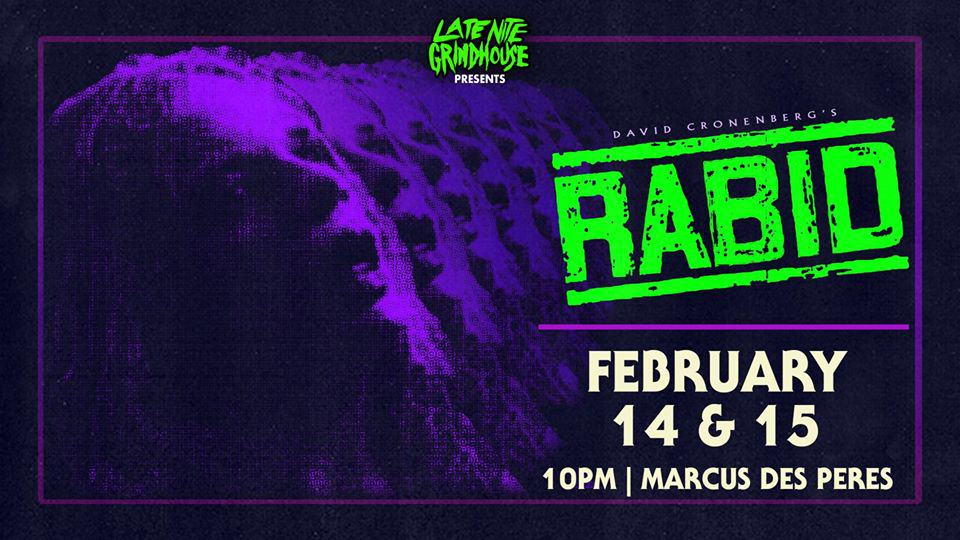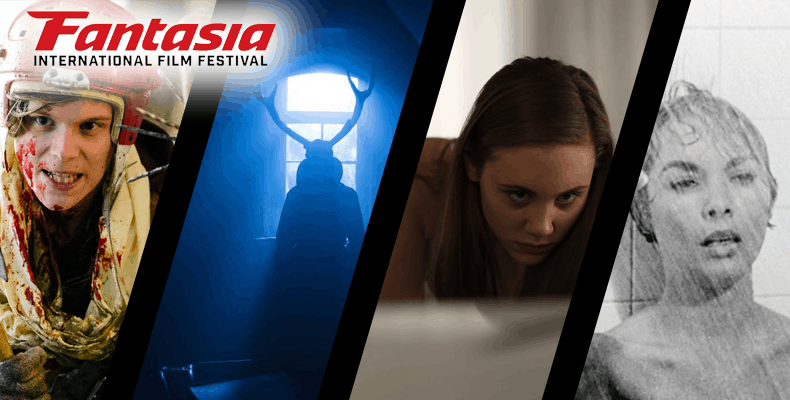
SLIFF ’11 Review: ‘A DANGEROUS METHOD’
David Cronenberg has seen quite a growth since his early days of grossing out his native Canadians with his initial “body horror” films Shivers (They Came From Within) and Rabid. From there, the astute writer and director’s “body horror” films began to evolve into the idea of how technology can influence or change man both mentally and physically. These films include Videodrome, The Fly, and Existenz. More recently, Cronenberg has shifted his attention to the more “mental horror” that can result from outside forces. He first explored this early on with The Brood: A film that included a helpless woman who literally gives birth to her mental sickness. Three of his last four films have Cronenberg exploring unstable mental states through one of his protagonists. Spider shows actor Ralph Fiennes dealing with mental illness as a result of his childhood. A History of Violence hints at a man with a split personality who is forced to create a normal persona to escape his violent past. Finally, with his most recent film, A Dangerous Method, he analyzes the relationship of a doctor and his patient set against the birth of psychoanalysis. It is as if Cronenberg has decided to go back to the beginning to see where his own ideas of sexuality, horror, and mental disability all stem from. Like sitting through an actual doctor’s appointment, A Dangerous Method does reveal some answers to your questions. Yet, it also leaves you a little cold.
A Dangerous Method begins with an extraordinarily unnerving sequence played with much strength by Keira Knightley. We see a frantic woman attempting to escape from a carriage as she is led to a hospital in Switzerland. The woman, Sabina Spilrein (Knightley), clearly is disturbed as she is barely able to sit still, twisting and convulsing, as doctor Carl Jung (Michael Fassbender) interviews her. Through this interview and the subsequent ones that follow in the weeks to come, Sabina reveals a woman whose thoughts of sexuality and intimacy have been skewed due to an unhealthy relationship with her father. As time passes, Jung is able to not only calm Sabina’s mental state but begins to form an intimate relationship with his patient. Jung has to not only hide this from his wife and professional mentor Sigmund Freud (Viggo Mortenson), but has to decide if the role of a doctor, family man, and a life of monogamy is right for him.
A Dangerous Method is essentially a film told in three parts. The first showing an unstable woman forced to confront her inner demons. The second following Dr. Jung and fellow psychoanalyst’s Otto Gross (Vincent Cassel) and Freud as they confront ideas of marriage, monogamy, and sex. Lastly, the final act shows the once determined and intelligent Jung see his life fall apart due to a growing conflict with Freud and a sexual relationship with Sabina. Though everything sounds well structured and exciting on paper, it’s only the first two acts that seem to stay on topic and present a dynamic film. Amid wordy discussions of free-will and human nature, A Dangerous Method intends to present the role reversal of Sabina and Jung. In the horrific first act, Sabina’s forced recounting of her dark desires is truly squirm inducing for the audience as we are also forced to watch, with few cut-aways, an uncomfortable sick woman reveal how she was “turned on” by her father hitting her. For horror fans of this site, these beginning interviews by Jung are torture for her and are uneasy to watch for us. Keira Knightley contorts her arms and legs while sitting in a clinical room and extends her mouth and jaw in ways that reveal Knightley as a truly talented actress. You will undoubtedly see her name at the Academy Awards this coming year. Cronenberg shifts the second act into comedic territory with the highly amusing Vincent Cassel. He portrays the character of Otto Gross with such a frank disregard of morality, that you can’t help but be amused when he brags of sleeping with numerous patients. Though many of these scenes are played for laughs, the precise script by Christopher Hampton reveals society’s own misshapen views of sexuality and forced repression. In the end, Cronenberg attempts to wrap everything up between Jung, his wife, Freud, and Sabina, but ultimately fails to paint a clear picture of these events. Freud, who is used at exact moments throughout the film, incorporates a unique element to the many discussions in the first two parts, but feels forced in the end as we fail to connect with him and Jung’s professional disagreements. Up until now, the script and direction have mainly provided a spotlight on Jung and Sabina but suddenly becomes stretched between too many players in the final 30 minutes. Method portrays a lapse of time by jumping five to ten years at a time towards the end to show the growth of Sabina into a strong doctor and Jung’s questioning of his abilities. It ends up feeling rushed and a little bit confusing. What is also to blame for this is the cold and overly academic way Fassbender portrays Jung. We connect to Sabina throughout her journey. Yet, Fassbender hardly gives him any sense of character and emotion aside from his determination as a collegiate doctor. So when we do see him break down on Sabina’s lap on his knees towards the end, we’re left scratching our heads and feeling disconnected to his new confused state.
Two-thirds of A Dangerous Method work really well with elements of the final act attempting to relate a message (though unclear) to the audience. Since the movie ends clumsily and abruptly, the point to all of the doctor visits and meaningful discussions seems a little lost. Cronenberg and writer Christopher Hampton attempted to create an aspiring and lofty film about a woman overcoming the obstacles set forth from her troubled youth. Yet, they also tried to recount the birth of psychoanalysis in Switzerland and Austria in the early 1900’s. What came out of this is in fact a brave performance by Keira Knightley, intelligent arguments regarding human nature, and an eventual muddled film from an extremely talented director that I have come to know through some brilliant films. Considering his knack for controversial material, I also felt Cronenberg could have pushed the envelope a little more with some of the sexual aspects of the film. He seemed to have an almost clinical distance from some of the more subversive elements. Given my bias, I may have liked it more than some. Though there is a lot to applaud here, my diagnosis of A Dangerous Method is that it feels a little cold and empty.



